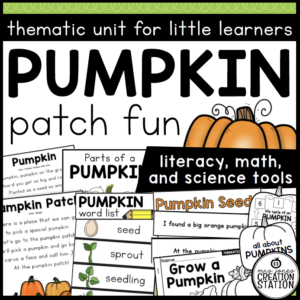Menu
This resource includes thematic lessons, activities, poems, songs and centers for your little learners during the summer season.
Buy the BUNDLE and SAVE! You can purchase this resources in the Thematic Activities for Little Learners Bundle and the Little Learners Mega-Bundle!
____________________________________________________________________
Week 35 Plans
This is a template for lesson plans during a summer unit. Pick and choose what ideas and resources work for your learners.
Summer – Whole Group
These resources can be used during whole group instruction for a summer theme. They include a poem, word cards, tracing page and table sign in sheets.
Summer Interactive Poem
Use this poem during a thematic lesson, whole group or a literacy center and have learners read about fun floats to use in the pool.
Summer Thematic Plans
Use these plans as a guide for engaging summer read alouds and activities in the classroom.
Summer
Read And Then Comes Summer and have learners list activities, places and foods we experience in summer. Have learners choose an item from each category to illustrate in detail.
Hot Sun
Read Wet Dog or Heatwave and have learners draw a way to stay cool on a post-it to add to a chart. Learners can write and illustrate how they will stay cool.
Bubbles
Read Pop! A Book About Bubbles and work together to list the steps to make bubbles. Explore how bubbles react when blown different.
Ice Cream
Read Milk to Ice Cream and order the steps mentioned in the text. Work together to order how to make homemade ice cream and make your own to enjoy.
Watermelon
Read The Watermelon Seed and have learners draw what would happen if they ate a seed on a butcher paper watermelon. Have learners complete the BME writing activity,
Summer Sensory Charts
Explore summer with the five senses. Complete the charts together and have learners draw and write about their summer experience using their senses on the interactive page.
Summer Predictable Chart Class Book
Use this resource to create a class book from the predictable chart created during the week.
Literacy Center | Letter Match
Have learners match the snow cones by their uppercase and lowercase letter.
Literacy Center | Short Vowel
Have learners sort the pictures by their medial vowel sound on a pocket chart.
Literacy Center | Sight Word WTR
Have learners find the sight words around the room and write them on their printable page.
Math Center | Graphing Data
Have learners sort and record the pictures on the chart. Two graphs are provided.
Math Center | Addition
Have learners picture two watermelons and add the seeds in each on the mat provided
Math Center | Number Order
Have learners put the numbers in order counting up and counting down.
WEBSITE | FACEBOOK | INSTAGRAM | PINTEREST | TEACHERS PAY TEACHERS
© Mrs. Jones’ Creation Station, Inc
How can I see what is new in the MJCS store?
Be the first to know about new discounts, freebies, and new products. You can also subscribe to our newsletter to receive access to resources only available to MJCS subscribers, as well as, special offers and ideas!
How can I get credit for my TpT purchases?
Go to your account button at the top of the page. Under the “Buy” section, click “My Purchases “. Beside each purchase you’ll see a Provide Feedback button. Simply click the button and you will be taken to a page where you can give a quick rating and leave a comment for the product. Each time you give feedback, TpT gives you feedback credits that you use to lower the cost of your future purchases. Please leave detailed feedback for each resource, so we are able to create better resources for teachers and students.
How can I find a certain activity in a large PDF file?
If the resource you purchase has a variety of activities compiled into one PDF find the table of contents and click on the activity title. This should take you to that specific activity in the resource.
What can I do if I have a question about a resource?
If you have any questions regarded a resource before purchasing please email me at mrsjonescreationstation[at]gmail.com. Once you have purchased the resource you may use the “Product Q and A” tab on the product page to ask a question, as well.
How do I know if a resource has been updated?
Go to your account button at the top of the page. Under the “Buy” section, click “My Purchases “. Choose to “sort by: recently updated” to see what resources have been updated since you downloaded them last. You can download any updates from there. If a file has been updated, you will see a notification under the resource that says “Newly Updated – Download for Free!”
This item is a paid product created by Mrs. Jones’ Creation Station, Inc. Copying any part of this product, redistributing, selling or placing it on the internet in any form is strictly forbidden and is a violation of the Digital Millennium Copyright Act (DMCA). Thank you for respecting our work!
YES, YOU CAN…
NO, YOU CAN’T…
Click here for a detailed post with step-by-step directions.
You will need to download fonts specified in the resource and install it on your computer before downloading the editable file.
Install the most recent version of Adobe Reader onto your computer. If you have any problems editing, viewing or printing a file make sure your Adobe Reader is updated.
Now you can download the file to your computer. Once the file has downloaded open in Adobe Reader. You should be able to view the editable fields and the text should match the product description. If you have any problems editing the file, make sure you have followed the directions above and then contact me at mrsjonescreationstation[at]gmail.com




